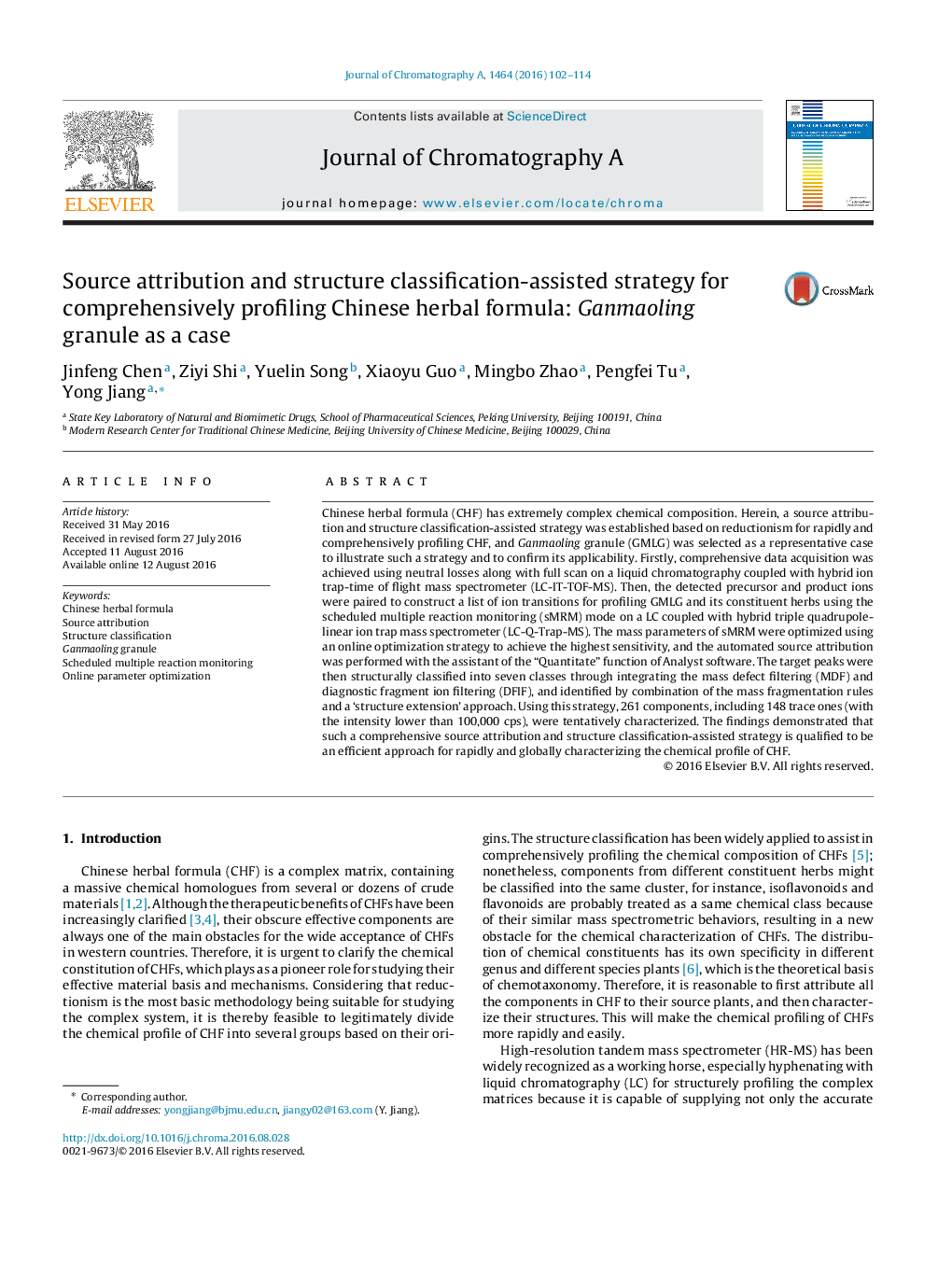| کد مقاله | کد نشریه | سال انتشار | مقاله انگلیسی | نسخه تمام متن |
|---|---|---|---|---|
| 1198790 | 1493462 | 2016 | 13 صفحه PDF | دانلود رایگان |

• Source attribution and structural classification were integrated to profile CHF.
• Automated source attribution was achieved by the “Quantitate” function.
• Online parameter optimization for CE was used to achieve the highest sensitivity.
• Structural classification was achieved by integrating DFIF and MDF.
• A total of 261 ingredients, including 148 trace ones were assigned from GMLG.
Chinese herbal formula (CHF) has extremely complex chemical composition. Herein, a source attribution and structure classification-assisted strategy was established based on reductionism for rapidly and comprehensively profiling CHF, and Ganmaoling granule (GMLG) was selected as a representative case to illustrate such a strategy and to confirm its applicability. Firstly, comprehensive data acquisition was achieved using neutral losses along with full scan on a liquid chromatography coupled with hybrid ion trap-time of flight mass spectrometer (LC-IT-TOF-MS). Then, the detected precursor and product ions were paired to construct a list of ion transitions for profiling GMLG and its constituent herbs using the scheduled multiple reaction monitoring (sMRM) mode on a LC coupled with hybrid triple quadrupole-linear ion trap mass spectrometer (LC-Q-Trap-MS). The mass parameters of sMRM were optimized using an online optimization strategy to achieve the highest sensitivity, and the automated source attribution was performed with the assistant of the “Quantitate” function of Analyst software. The target peaks were then structurally classified into seven classes through integrating the mass defect filtering (MDF) and diagnostic fragment ion filtering (DFIF), and identified by combination of the mass fragmentation rules and a ‘structure extension’ approach. Using this strategy, 261 components, including 148 trace ones (with the intensity lower than 100,000 cps), were tentatively characterized. The findings demonstrated that such a comprehensive source attribution and structure classification-assisted strategy is qualified to be an efficient approach for rapidly and globally characterizing the chemical profile of CHF.
Journal: Journal of Chromatography A - Volume 1464, 16 September 2016, Pages 102–114